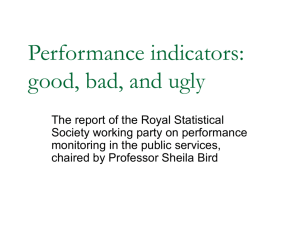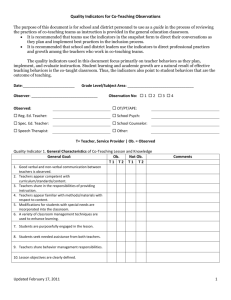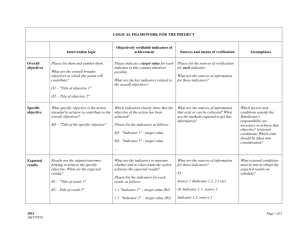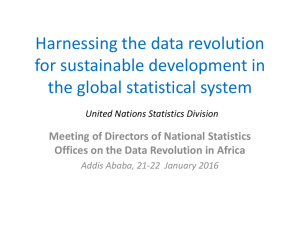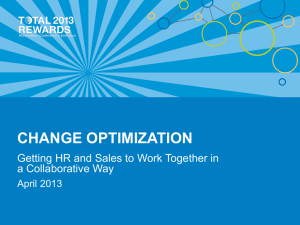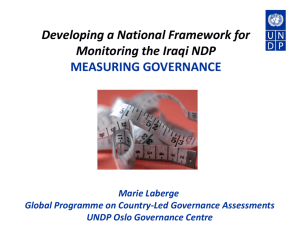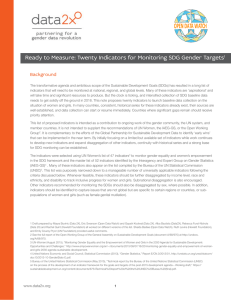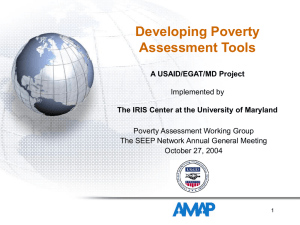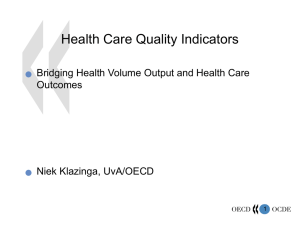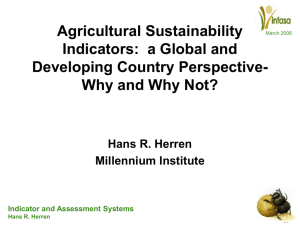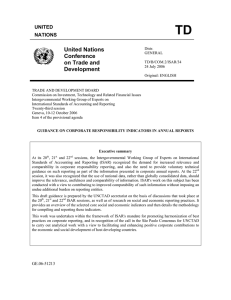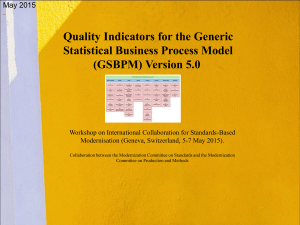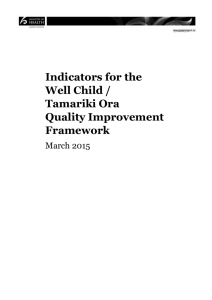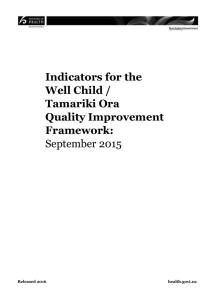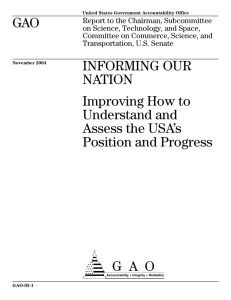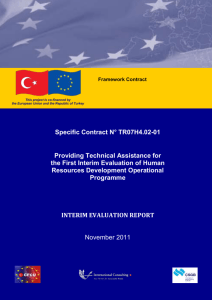Stories in Numbers: Using Financial Indicators to Reveal Household
advertisement
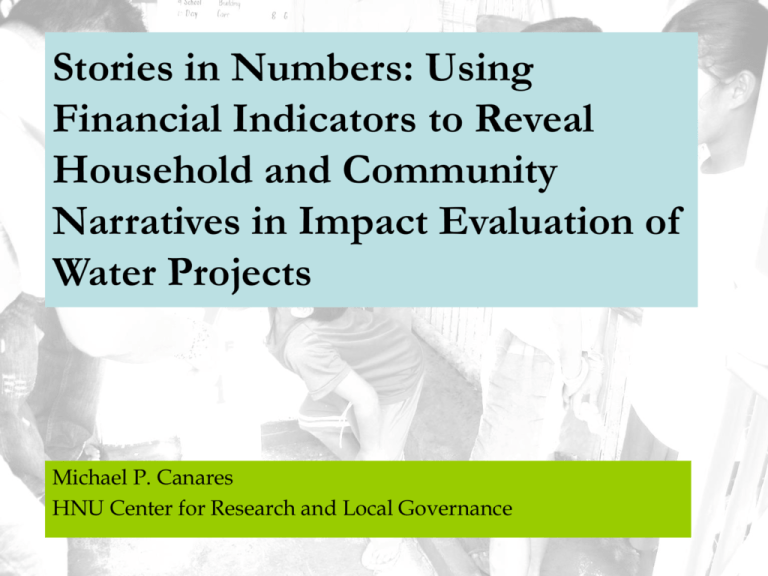
Stories in Numbers: Using Financial Indicators to Reveal Household and Community Narratives in Impact Evaluation of Water Projects Michael P. Canares HNU Center for Research and Local Governance Structure of the Presentation • Conclusion • Background of the paper • Amplifications of the Measures Used • Implications on Impact Evaluation Research Conclusion • While not a substitute to other qualitative and quantitative measurements, financial indicators have the capacity of revealing important stories from the perspective of beneficiaries and communities and reinforce, if not enrich, our understanding of program or project inputs, process, achievements, issues, and concerns. Do these things mean something? 25000 20000 15000 Coastal Upland 10000 5000 0 Project Area 1 Project Area 2 Per capita cost of water development project, area classification compared Problem with auditors and accountants • Static textbook concepts (e.g. lower per capita costs, the better) • Deskwork versus fieldwork (e.g. interpreting than experiencing) • Biased interpretations (e.g. costs over benefits) The bias of this paper • Financial indicators are not to be read devoid of “stories from the field” • Financial indicators, as a matter of fact, tells “stories from the field” • Financial indicators reveal strong evidence on outcomes and impact to supplement qualitative representations Indicator 1 (HH): Cost of Getting Water Traditional comparison of Y1 and Y0 Cost of getting water is computed using per unit costs (e.g gallon or liter) Household Narrative and Conclusions ‘Before the project, we get water from the pump owned by our neighbor. She charges us 5 peso per gallon. Every week, we consume around 10 gallons. Now, we pay 50 pesos a month for our Level II water system.’ Pre Project (Php5 x 10 x 4 weeks) Post Project Net Savings P200.00 50.00 150.00 This is informative but insufficient. For example, the ‘neighbor’ is two kilometers away, and walk is about 40 minutes due to steep terrain. Financial Indicators and Conclusions Pre-project P5xP10xP4 wks labour cost (imputed) P225/8x5x4wks Post-project Net Savings 200.00 562.50 762.50 50.00 712.50 The indicator expands cost of water by including labour opportunity costs, as well as the differential costs of access due to geographical limitations. Limitation: There is an implicit assumption that it was productive labour that was affected. What if children are the ones who fetch the water from the source? Indicator 2(HH): Released Financial Resources • Indicates amount of funds released for other household expenses • May be expressed as a percentage of household budget or as a consumption unit in other goods Financial Indicators and Household Narratives Pre project (actual cash outlay) Post Project (actual cash outlay) Freed up cash Percentage of household budget Alternative consumption (rice) P200.00 50.00 150.00 5.35% 4.17 kilos ‘Because water came cheap, we are now able to spend more on other needs of the family.’ Limitation: There is an implicit assumption that freed up resources are used for food and essential consumption items. This may not be true when freed up resource is used for betting on a numbers game. Indicator 3(CO): Replacement Capacity • Indicates the ability of the water service provider (association) to construct the same water service facility after end of useful life of current one FIs, Community Narratives, and Interpretations Replacement Cost P7,856,550.00 Depreciation provision 15 years Differential Cost of new asset Required Net Income Per year for 15 years P6,489,000.00 P1,367,550.00 P91,170.00 Average income, year 1-5 Income Deficiency P65,468.00 P25,702.00 ‘The facilities’ useful life is 15 years. This means we need to raise sufficient funds to be able to construct it on our own in the long term.’ The association’s options need to be pointed out – increasing water rates, minimizing costs. Indicator 4 (DA): Per Capita Cost of WDP 25000 20000 15000 Coastal Upland 10000 5000 0 Project Area 1 Project Area 2 The indicator gives a good sense of how much funds are needed to implement a particular project in similar circumstances, as long as context is equally analyzed. What are the implications of these on impact evaluation research? • Early on, data needed for financial analysis needs to be incorporated as part of baseline data generation • Research design should consciously incorporate financial indicators to investigate commonalities and variations Many thanks for the kind attention.

